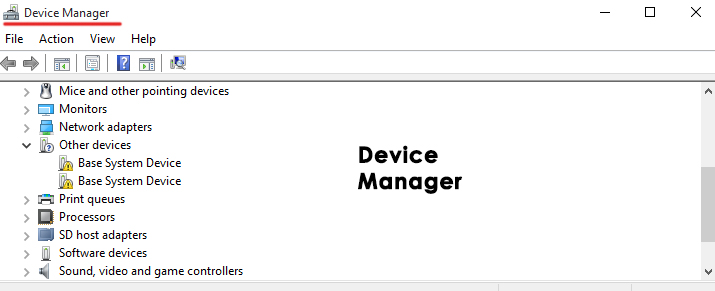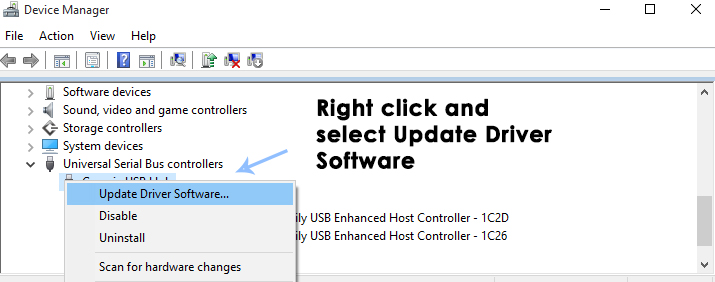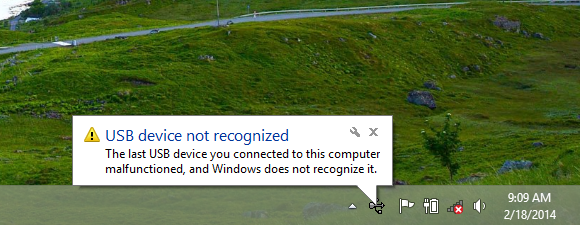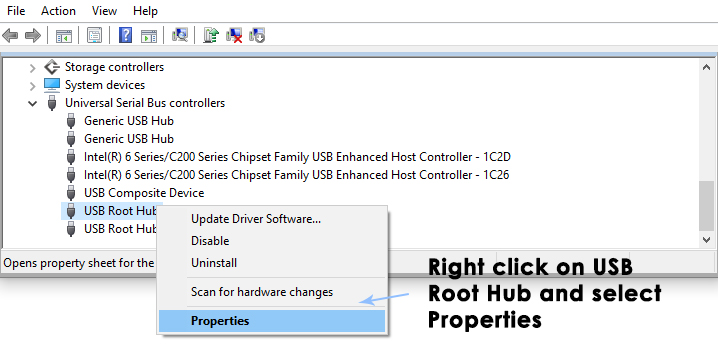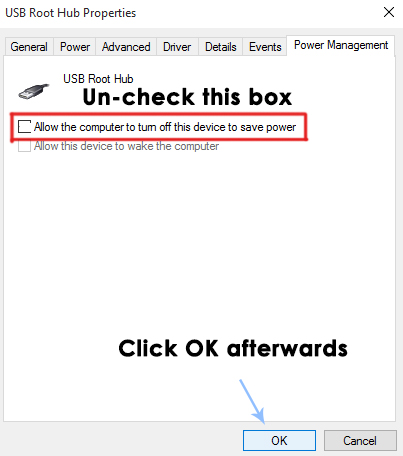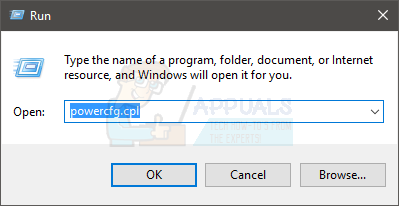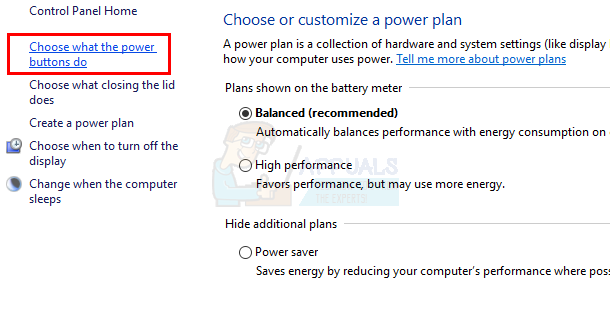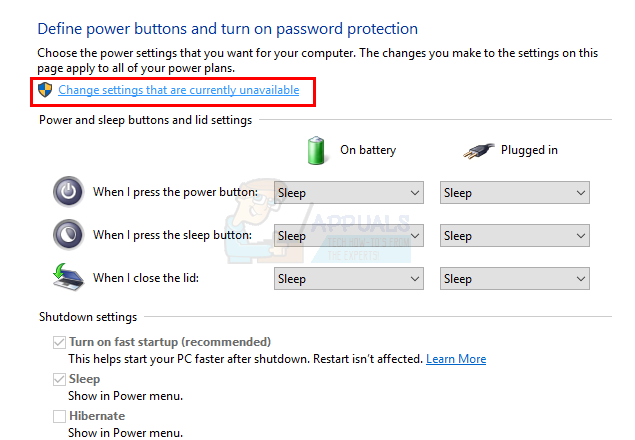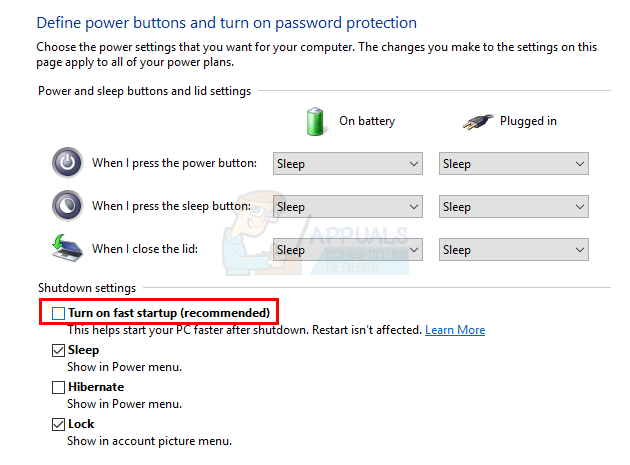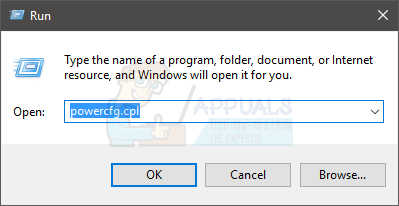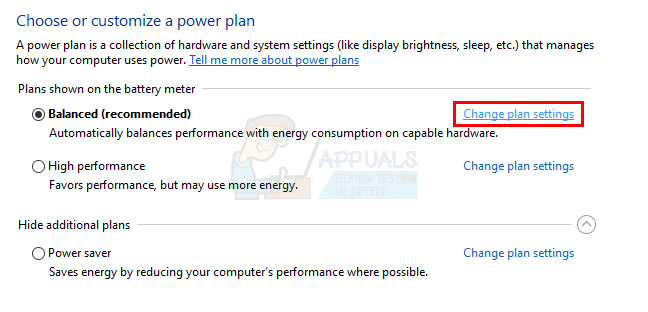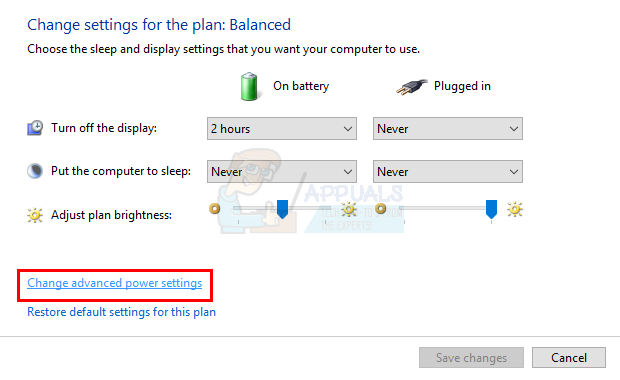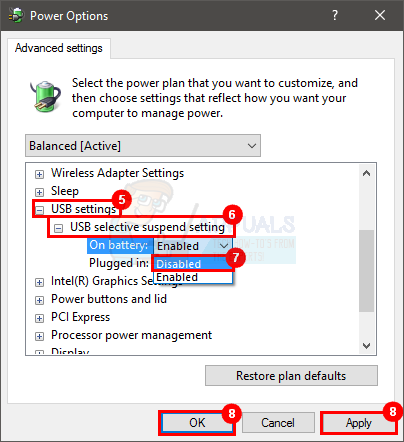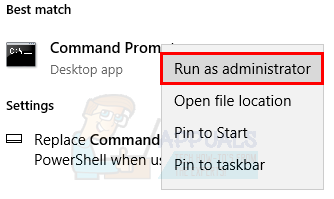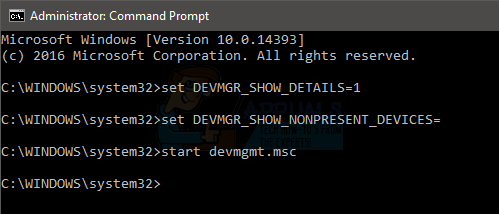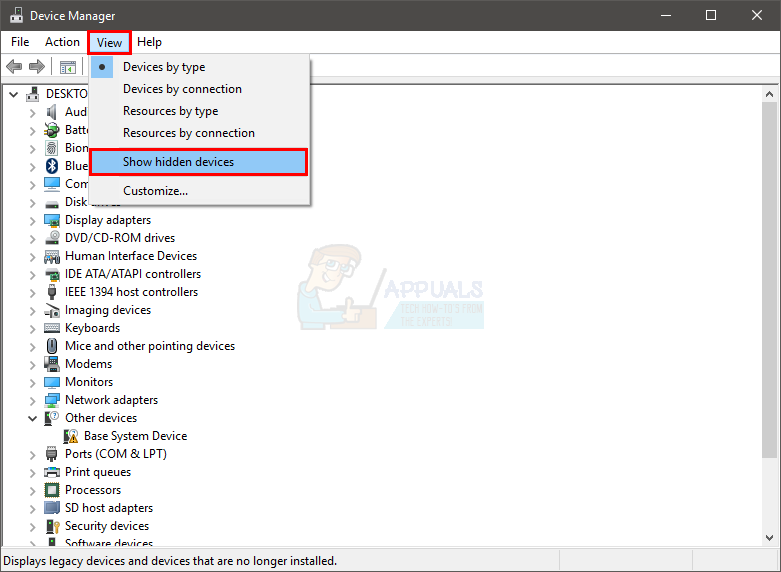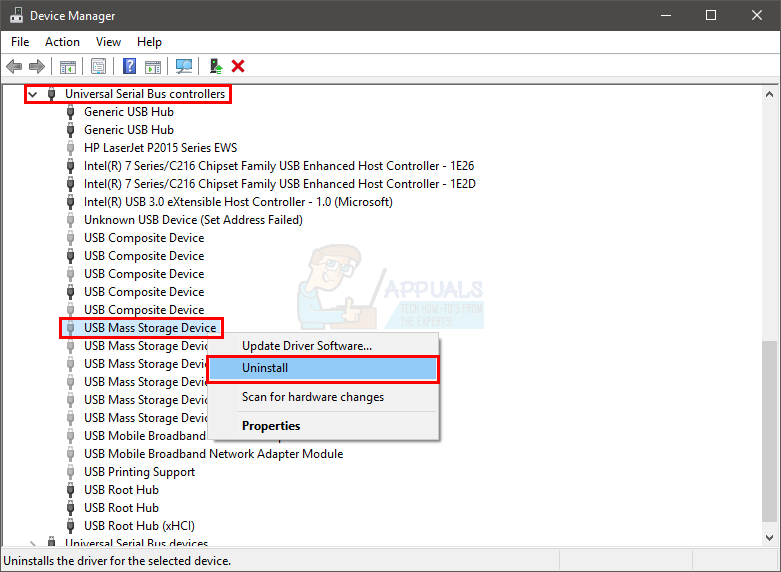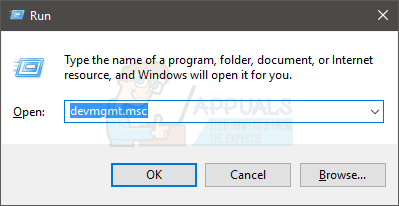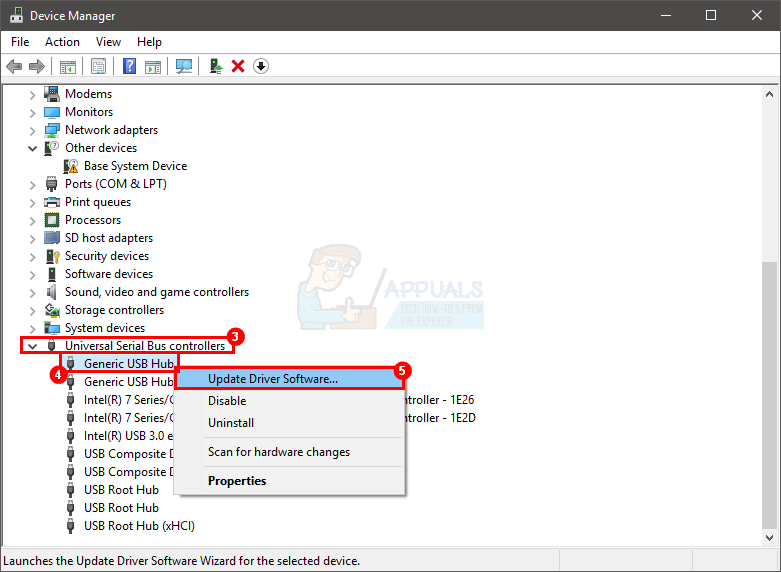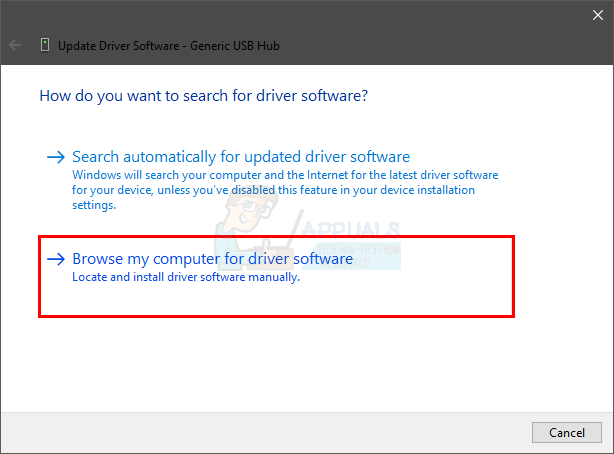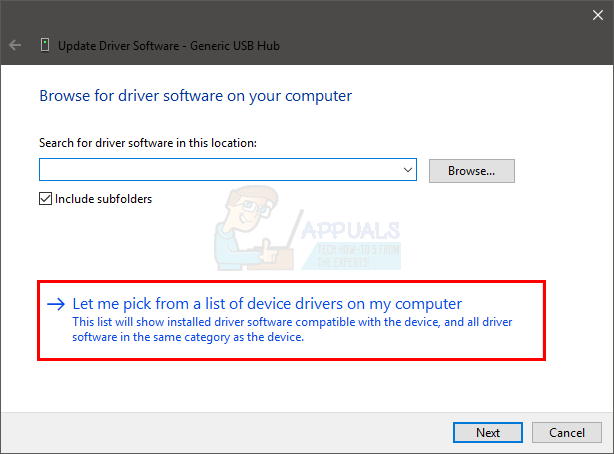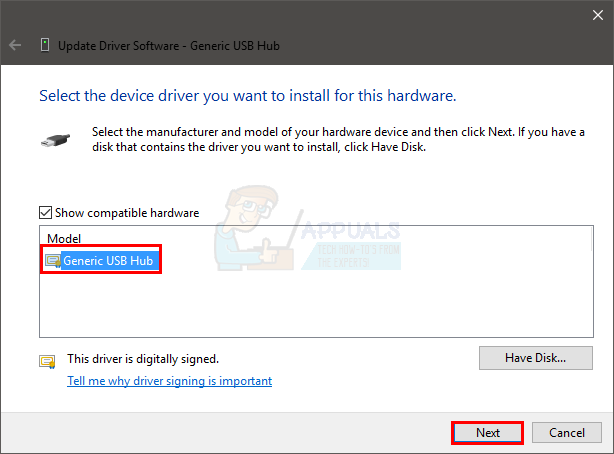But problems are still there haunting the users in a number of ways. A lot of people are having trouble with USB inside Windows 10. There are a number of issues that are associated with USB. Some people have reported that they cannot use any external USB device on their PC’s/ laptop’s ports. According to others, rebooting the system with an external USB device attached causes a failure and doesn’t recognize the device. So, these kinds of issues aren’t a good deal for a computer user as it is daily task to attach external media to the computer for file transferring process.
Reasons Behind the Windows 10 USB Problem:
There might be some glitches with USB drivers installed on the PC. These USB drivers can be out-dated or there might be some conflicts causing this problem to occur.
Solutions to Fix the Windows USB Problem:
There are numerous solutions which can help you out in getting rid of this issue. You can follow methods mentioned below.
Method 1: Reinstalling/ Updating USB Device Drivers
This is a pretty straight-forward method to fix the USB related problems. All you need to do is to Reinstall or Update USB device drivers. For this purpose, it is recommended that you boot your PC in Safe mode. Follow the steps below.
Enter your PC in safe mode to uninstall or update USB device drivers. It is better in a way that you would not have any conflicts with other softwares while in safe mode. So, here is a brief guide on How to start Windows 10 in Safe Mode. Follow the steps mentioned in this guide accordingly.
After entering into safe mode, navigate to Device Manager by right clicking over the Start menu icon and selecting it from the list.
Inside the Device Manager, scroll down to see USB devices attached to the system. If you can’t find a device, scroll down to the end to find an option labeled as Universal Serial Bus controller. Expand that option to see a list of USB devices connected to the system.
Now, you need to find the malfunctioning USB device from the list. In some cases, you will also see a yellow sign on a particular USB device. In that particular case, you would be required to update the drivers. To update, right click on the USB device and select Update Driver Software. From the next window, click on Search automatically for updated driver software if you want to let the Windows search it for you. On the contrary, if you have USB drivers saved on your hard drive, click on the second option and browse the drivers. After the process is finished, check for problems.
To uninstall the drivers, select that USB device and right click over it to select Uninstall. Next, you would need to confirm it by checking the box labeled Delete the driver software for this device. Click on OK afterwards.
After the un-installation is done, you have to unplug the USB device and restart the PC. When you are back in Windows, plug the USB again to let the Windows install the drivers automatically. You can also manually install the drivers if Windows is unable to install them automatically.
Method 2: Fixing USB Device Not Recognized Error
If you get a pop-up message saying USB Device Not Recognized after plugging-in the USB to the PC, then you need to follow the steps mentioned below to fix this problem.
Open the Device Manager and scroll down to expand Universal Serial Bus controller. From here, select the USB Root Hub and right click over it to select Properties.
Inside the Properties, navigate to Power Management tab from the top and uncheck the Allow the computer to turn-off this device to save power and click OK. Check again for problem with USB device whether it is resolved or not.
Sometimes all you have to do is tell the system to check for any hardware changes to recognize the USB. Follow these steps to do this Make sure that your USB is directly plugged in to your computer. If you are using a hub or anything else then that might be causing the issue. So, connect your USB directly to your computer’s port and check whether the issue is there or not
Method 3: Turn off Fast Settings
Turning off the Turn on fast settings solves the problem of USB not recognized. You can turn off the fast settings by following the steps given below Plug in your USB once the system is rebooted and check whether the problem is still there or not. Note: If this solution doesn’t work then repeat the above given steps and change the settings back to how they were before.
Method 4: USB Select Suspend Settings
Changing the USB Select Suspend Settings to Disabled for both Battery and Plugged in solves the problem for many users. Follow the instructions below and then try to insert your USB to check whether the problem is solved or not.
Now check if the problem persists or not.
Method 5: Uninstalling Hidden Devices
Sometimes the older devices are still installed on the device but don’t appear on your device manager. This is mainly because your device manager only shows the devices that are connected at that time. So, if you had a device installed previously but it wasn’t uninstalled, it will still be there on your computer but won’t show up in device manager. This can conflict with your present USB device which might be causing this issue. That is why it is important to find these hidden devices and uninstall them.
Once you are done, try connecting your device again and you should be fine
Method 6: Installing Generic USB Hub Driver
Installing the Generic USB Hub Driver might work for you especially if you are seeing an Unknown Device in the Device Manager. Now, check if the USB problem is solved or not. If it isn’t then repeat the above process for each Generic USB Hub listed under Universal Serial Bus Controller.
USB 2.0 vs USB 3.0 vs USB 3.1: Which should you Have and Why?Fix: USB Composite Device can’t work properly with USB 3.0Fix: iPhone not recognized by Windows 10Fix: Javac is not recognized on Windows 10
